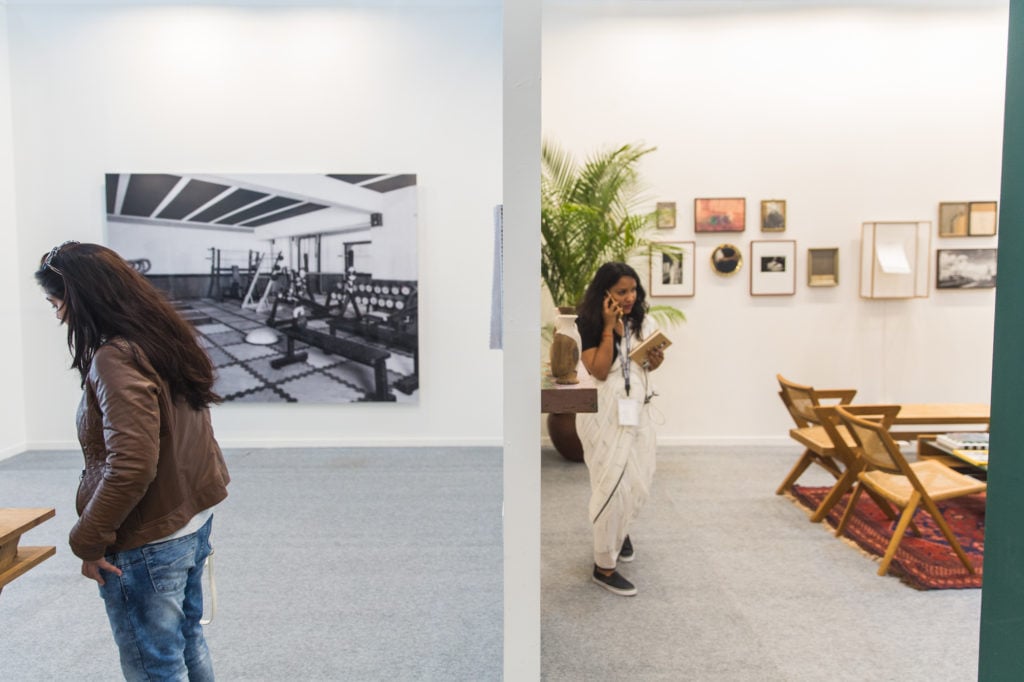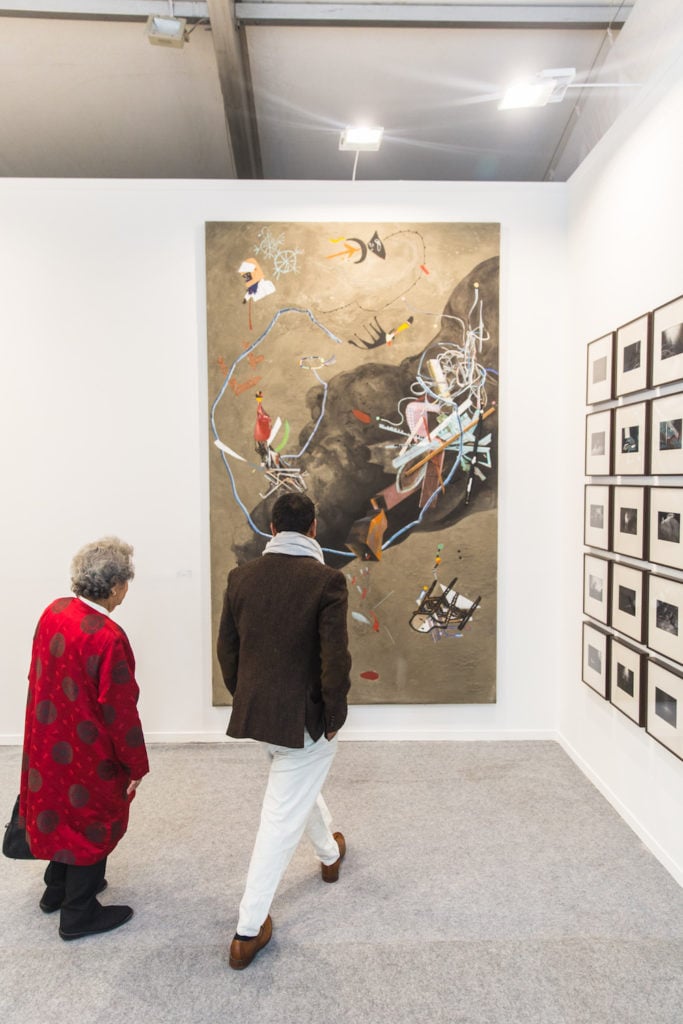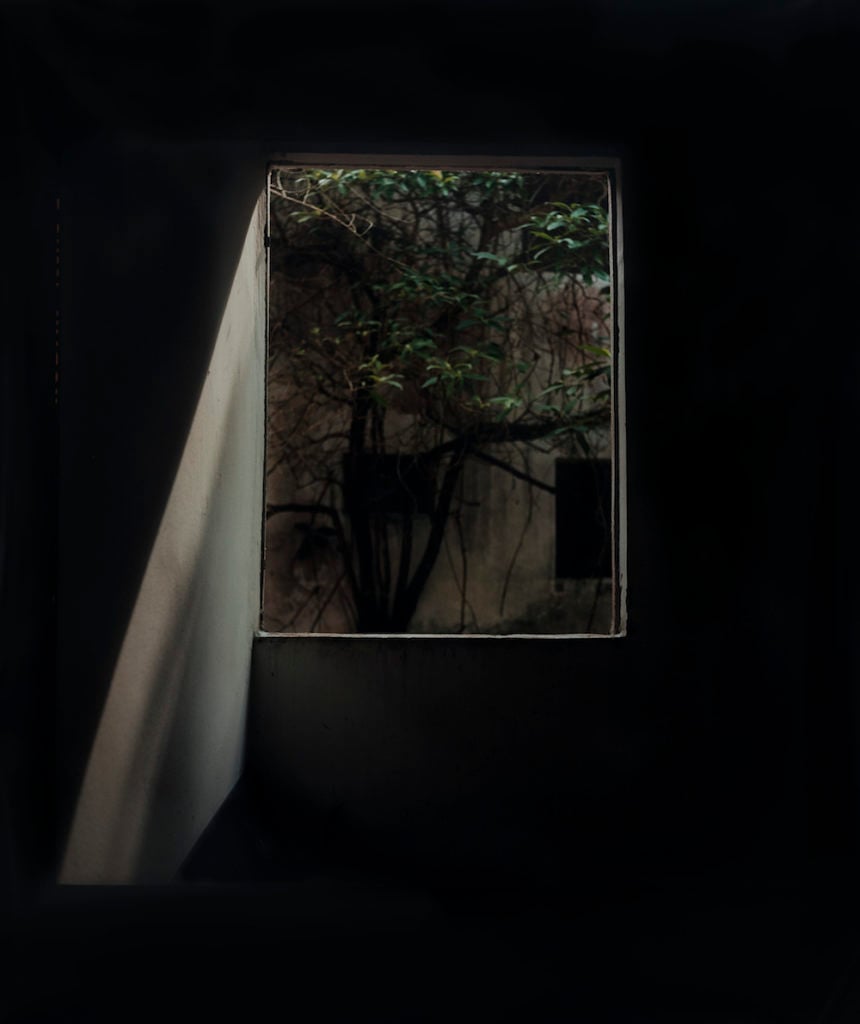Art Fairs
The India Art Fair Made an Unorthodox Demand of Its Dealers—and It Paid Off
Organizers insisted that galleries bring fresh works to New Delhi.

Organizers insisted that galleries bring fresh works to New Delhi.

Skye Arundhati Thomas

The 2018 edition of the India Art Fair opened at the NSIC Grounds in New Delhi on Friday looking like it had gone through a sharp, clean edit. The 10th edition, open through February 12, is the first under new leadership and the second since Basel’s MCH, Art Basel’s parent company, came on board as a co-owner.
The fair boasted raised walls, redesigned booths, and better lighting—perhaps indicative of the introduction of a Swiss aesthetic. There are 78 exhibitors in total, 58 from India. Many galleries from previous editions did not make the cut this year, but several dealers—who had grown tired of the monotony of previous editions and stopped coming altogether—returned to the fold. Meanwhile, mega-gallery David Zwirner and London’s Blain/Southern were among those exhibiting at the fair for the first time.
“If the galleries become tired, the fair becomes tired,” the event’s newly appointed director Jagdip Jagpal told artnet News. “And we are going to work very hard to make sure that never happens again.”

David Zwirner’s booth at India Art Fair 2018. Copyright Andy Barnham.
The fair’s overhaul also includes a renewed focus on art and collectors from the region. “It would be disrespectful to the audience here if the international galleries bring in works that don’t sell elsewhere with hopes that they will work here,” Jagpal said. “Which is what happened years ago, and many felt insulted by some of the galleries that came.”
This year, all participating galleries were required to bring new works to the fair. First-time exhibitor David Zwirner commissioned several new works by Yayoi Kusama. One, from the “Infinity Nets” series (2017), quickly sold to a Mumbai-based collector for an undisclosed sum. A work by Oscar Murillo was also snapped up. Zwirner reported further sales and reserves for works by Thomas Ruff, James Welling, and Kusama priced between $10,000 and $650,000.

Kolkata-based Experimenter Gallery’s booth. © Andy Barnham.
Galleries from India and the wider region maintained a strong presence as well. Experimenter Gallery from Kolkata came close to selling out its booth by the end of the fair’s opening day. As at previous editions of the fair, Indian galleries were reluctant to talk about sales or even price points.
Meanwhile, both Jhaveri Contemporary and Chatterjee & Lal from Mumbai returned to the fair after a years-long absence, and newcomer Tarq from Mumbai showed a strong set of works by younger artists. One of the fair’s selling points is its solid contingent of work by emerging talent, which can start at prices as affordable as $800.
The fair’s organizers hope the event’s increasing emphasis on new—and newly commissioned—work will help push collectors outside of their comfort zones and away from a reliance on Modernist work from the secondary market.
Particularly engaging booths were presented by Akar Prakar from Kolkata, Chemould Prescott Road from Mumbai, Shrine Empire and Anant Art from New Delhi, and Aicon Gallery from New York. The fair also saw participation by nonprofits from the region, including the Britto Arts Trust from Dhaka and the Nepal Arts Council from Kathmandu.

Simryn Gill’s Windows (2011, 2017) at Mumbai-based Jhaveri Contemporary. Imagecourtesy Jhaveri Contemporary.
Among the international players spotted at the fair was Maria Balshaw, the director of Tate. The UK museum came with a fairly large acquisition team, including Nada Raza, the curator for the Tate’s Asia Research Center. Also spotted roving the aisles: Navina Haidar, the curator of Islamic Art at New York’s Metropolitan Museum of Art, Jay Levenson, the director of international programming at MoMA, and teams from the Museum of Fine Arts, Boston, and the Louvre Abu Dhabi. The Cincinnati Art Museum’s photography curator, Nathaniel Stein, and its curator for South Asian art, Ainsley Cameron, were also in attendance.
Yamini Mehta, Sotheby’s international head for Indian and South Asian art, said this year’s fair comes at a fertile moment in the country’s art market. “A lot of the speculators are now out of the market, and collectors are instead buying with the idea of owning a work for at least a generation,” she said. “This has built stability in the marketplace, whereas before you had works mostly staying in their crates and moving from one warehouse to another for years.”